South Africa is home to some of the most breathtaking photography spots in the world, making it a dream destination for photographers in 2025. From golden savannas where wildlife roams freely to dramatic coastlines, mountain ranges, and vibrant cityscapes, the country offers endless opportunities to capture unforgettable images. Travelers, bloggers, and professional photographers continue to search for the best photography locations in South Africa because of its unmatched natural beauty and cultural diversity.
In this ranking of the top ten best photography spots in South Africa for 2025, you will discover iconic landmarks and hidden gems that are trending across travel and photography platforms. Popular keywords like Cape Town photography, Table Mountain views, safari photography in Kruger National Park, and Instagram worthy destinations in South Africa reflect what people are searching for online, and each spot is carefully chosen to inspire your visual journey.
Whether you want to capture the colorful houses of Bo Kaap, the rolling vineyards of Stellenbosch, or the untamed power of Victoria Falls near the border, these locations are perfect for both professional shoots and travel photography enthusiasts. South Africa is not just a destination, it is a canvas where every frame tells a story. By exploring this list, you will have a guide to the most scenic and highly photographed places in South Africa, ensuring your images stand out while keeping up with 2025 travel trends.
Top Ten Best Photography Spots In South Africa (2025)
10. Walter Sisulu National Botanical Garden, Gauteng
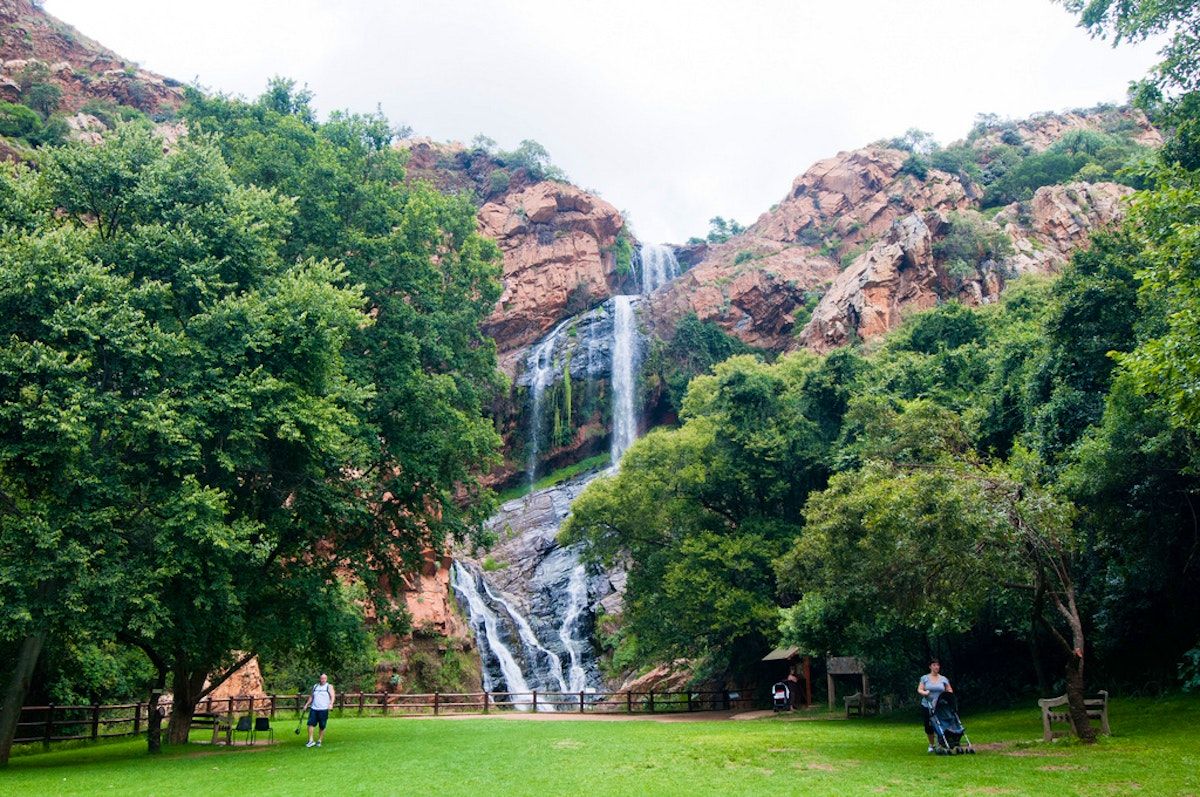
A sanctuary of indigenous plants, winding streams and elegant waterfalls, Walter Sisulu National Botanical Garden is a remarkable destination for nature photography in South Africa. The garden provides endless opportunities to capture fynbos shrubs, protea blossoms and peaceful water reflections. Photographers can experiment with low angles to frame flowers against shimmering ponds while resident bird species and small wildlife add dynamic elements to the scenery.
Early morning is perfect for misty light, while late afternoon highlights the waterfall with warm tones. Macro photography thrives here, but wide landscapes also work beautifully when reflections are included. A tripod is useful for long exposures of flowing water and exposure bracketing can balance the contrast between shaded vegetation and bright skies. The calm environment during weekdays makes it easier to work without disturbance, and the variety of textures across the gardens ensures versatile compositions that appeal to professionals and enthusiasts alike.
9. Muizenberg Beach, Cape Town

Muizenberg Beach is famous for its colorful beach houses, soft waves and pastel tones that are ideal for lifestyle and travel photography. The row of cabins lined against the shoreline creates strong geometry that works beautifully during sunrise when the sky glows with soft hues. Photographers often explore low tide for its reflective sands and tide pools that mirror both huts and dramatic skies. Surfing scenes provide additional energy, making it a hotspot for action and long exposure water shots.
A polarizing filter enhances the contrast of cabins and helps control glare on wet surfaces, while a wide angle lens brings out the sweeping coast. Portraits against the painted huts also stand out, especially during golden hour. Wind can sometimes be strong, so steady equipment with sandbags or stabilizers. The beach offers endless variations for creative compositions, from abstract doorways to expansive panoramic scenes that capture Cape Town’s coastal atmosphere.
8. Kirstenbosch National Botanical Garden, Cape Town
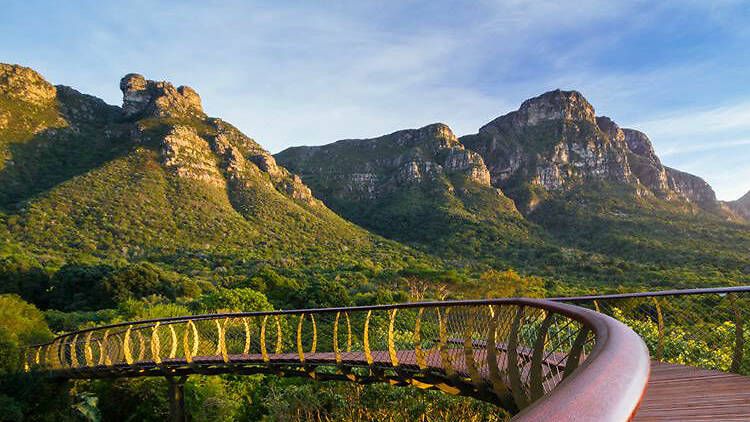
Kirstenbosch National Botanical Garden is one of the most picturesque locations for landscape and botanical photography. Nestled at the base of Table Mountain, it combines manicured gardens with untamed mountain vegetation, creating rich layers for composition. The canopy walkway, known as the Boomslang, gives sweeping views across treetops, especially dramatic during sunrise when light filters through the leaves.
Close up shots of indigenous flowers, detailed textures of bark, and natural birdlife offer countless opportunities for macro and wildlife photography. Wide lenses highlight the contrast between vibrant gardens and the looming presence of Table Mountain. Photographers can make use of exposure blending to balance shadows in the foreground with the brightness of the mountain. The garden’s seasonal plant cycles make it rewarding to return at different times of year, with fresh photographic subjects always on display. Respecting plant boundaries is essential, but within the paths there are unlimited framing opportunities to create striking imagery.
7. Bo Kaap, Cape Town
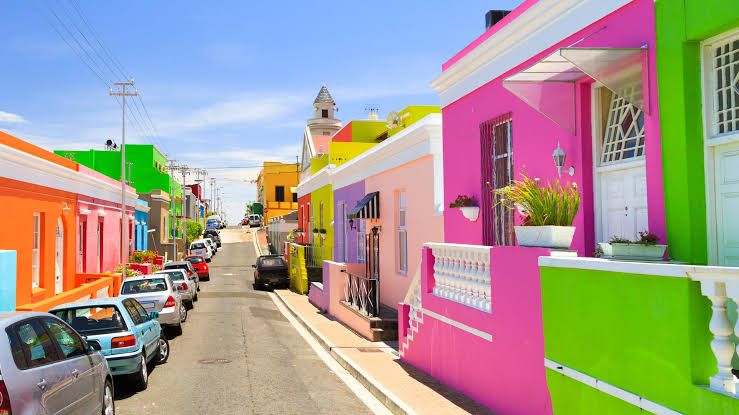
Bo Kaap is a cultural and architectural landmark, filled with brightly painted houses, cobbled streets and intricate details that draw street photographers from around the world. The vibrant facades offer endless variations for composition, with lines of houses forming rhythmic patterns against the backdrop of the city and Table Mountain. Narrow streets and colorful staircases provide strong leading lines, while small architectural details such as shutters, doors and roof textures add richness to close ups.
Shooting early in the morning delivers soft shadows and calmer streets, while late afternoon light intensifies the hues of the buildings. Photographers focusing on portraits can take advantage of the rich color contrasts to frame subjects, but respect for residents is key when capturing lifestyle shots. This district offers a balance of culture and urban vibrancy, making it one of the most Instagram worthy places in South Africa.
6. Chapmans Peak and the Cape Peninsula Coast
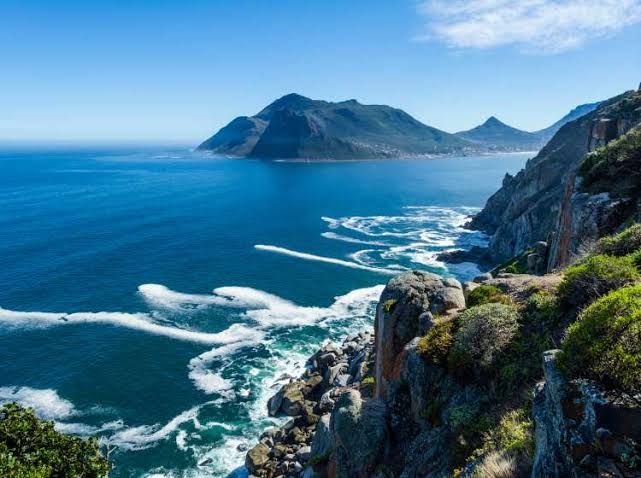
The cliffside drive along Chapmans Peak and the wider Cape Peninsula offers breathtaking landscapes that are ideal for seascape and travel photography. Dramatic rock formations, winding roads and sweeping ocean views create scenes filled with depth and drama. Golden hour casts warm tones on the cliffs, while approaching weather systems add dramatic skies.
Neutral density filters help achieve long exposures that smooth out the water surface, creating a striking contrast with rugged cliffs. Compositions can use the winding road as a leading line, drawing the viewer’s eye toward the horizon. Telephoto lenses compress the cliffs into layered shapes, while wide lenses capture the vastness of the sea. Wildlife such as seabirds or seals often appear along the coast, providing additional subjects. Safe pull off points along the drive allow photographers to explore multiple perspectives, each offering a unique take on South Africa’s dramatic shoreline.
5. Bloubergstrand and Table Bay, Cape Town
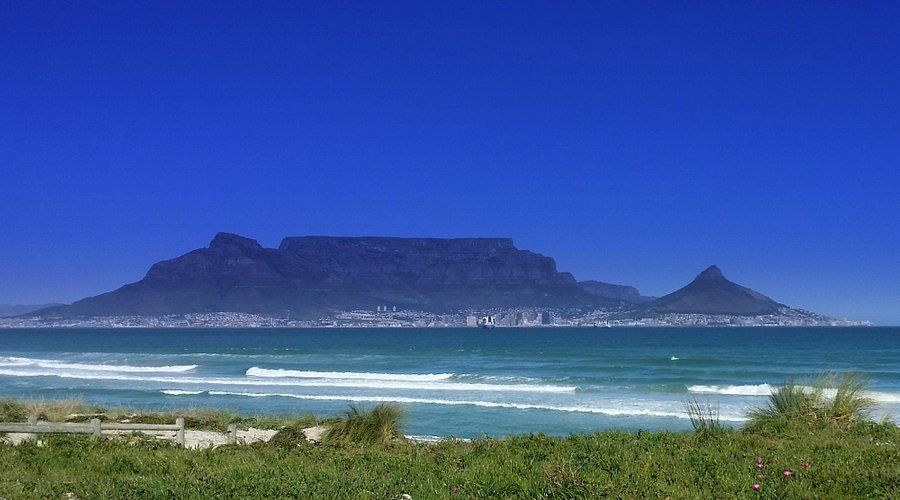
Bloubergstrand provides one of the most iconic views of Table Mountain across the water, making it an essential stop for photography in South Africa. Low tide transforms the wet sand into reflective surfaces, producing mirror like images of the mountain and skies above. Kite surfers and coastal activity add scale and movement, while the curve of the shoreline guides the viewer naturally into the frame.
Wide angle compositions are effective for capturing the entire sweep of ocean and mountain, while telephoto lenses emphasize the mountain’s imposing presence. At night, long exposure photography reveals the city lights twinkling in the distance with waves adding soft texture in the foreground. Photographers can frame foreground rocks, tidal pools or even human figures to anchor the vast scene. Every season brings different atmospheres, from stormy skies to crisp summer light, giving this beach lasting appeal for both beginners and experienced image makers.
4. Signal Hill and Lions Head, Cape Town
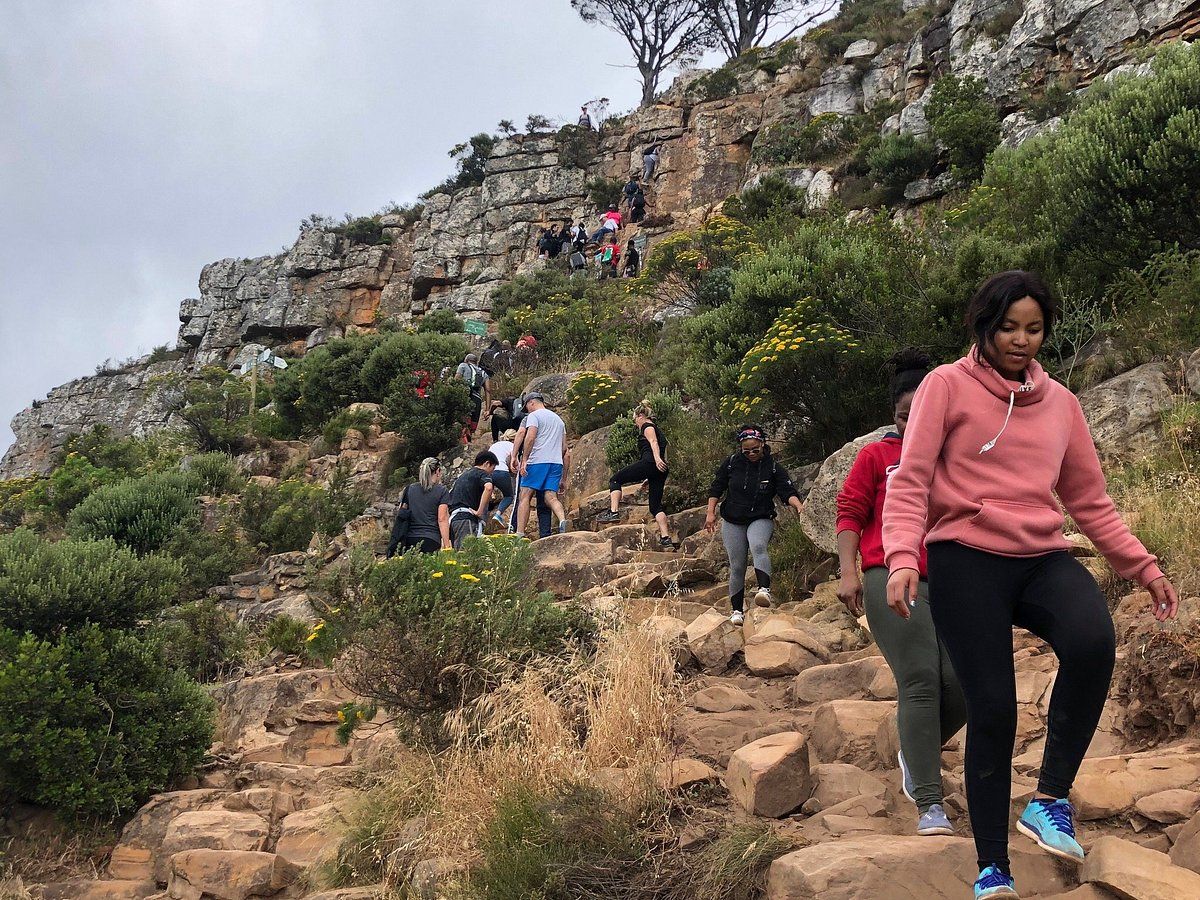
Signal Hill and Lions Head provide two elevated vantage points that are essential for capturing Cape Town from above. Signal Hill is accessible by road, offering panoramic views of the city bowl, coastline and Robben Island, which glow spectacularly during sunset. Long exposures here work well for city light trails and twinkling nightscapes. Lions Head requires a hike but rewards photographers with a 360 degree view that includes Table Mountain, Camps Bay and the Atlantic Ocean.
Sunrise from the summit is particularly rewarding, with golden light pouring across the ridges. A wide angle lens is ideal for capturing the scale of sky and city together, while telephoto lenses compress the distant peaks into striking layers. Weather conditions can shift quickly, producing fog or cloud inversions that dramatically alter the mood. Safety is important when hiking, so plan early arrivals and bring essentials for both photography and personal comfort.
3. Cape Peninsula Coastal Towns and Coves
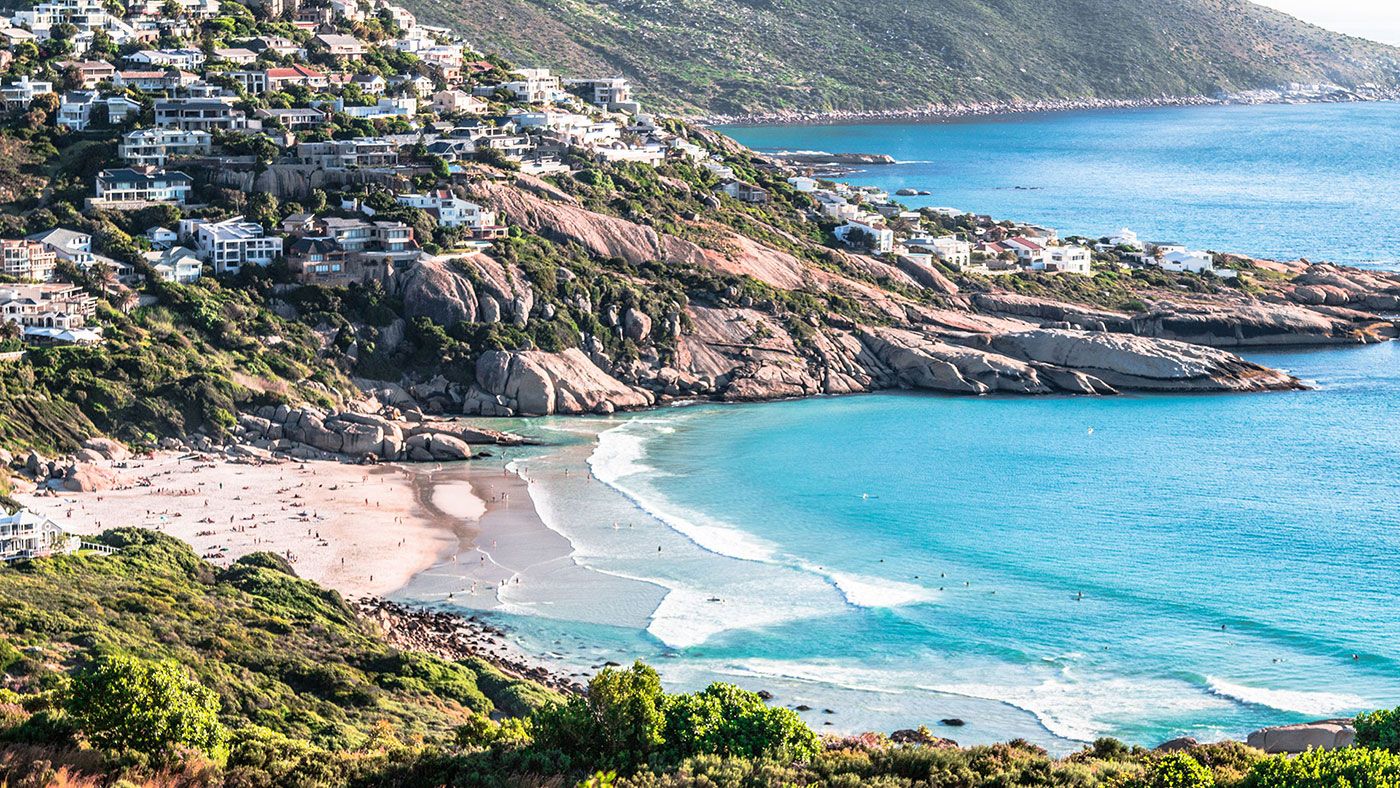
The smaller towns and coves scattered along the Cape Peninsula offer intimate scenes that complement the larger landscapes of the region. Kalk Bay is famous for its fishing harbor, where boats, nets and seagulls create authentic maritime frames. St James is known for its Victorian beach huts and tidal pools that are excellent for colorful and symmetrical compositions.
Photographers who explore hidden coves discover rock formations and tide channels that provide strong foregrounds for wide ocean views. A polarizing filter helps reduce glare on water and enhances natural tones of stone and sea. Close up work on tidal life, driftwood and water textures can produce abstract studies, while long exposure photography turns waves into soft mist against the rocks. Human activity, from fishermen casting nets to children playing near tidal pools, adds storytelling layers to images. These spots reward patient exploration and careful timing with varied and visually rich results.
2. Drakensberg Amphitheatre, Royal Natal National Park
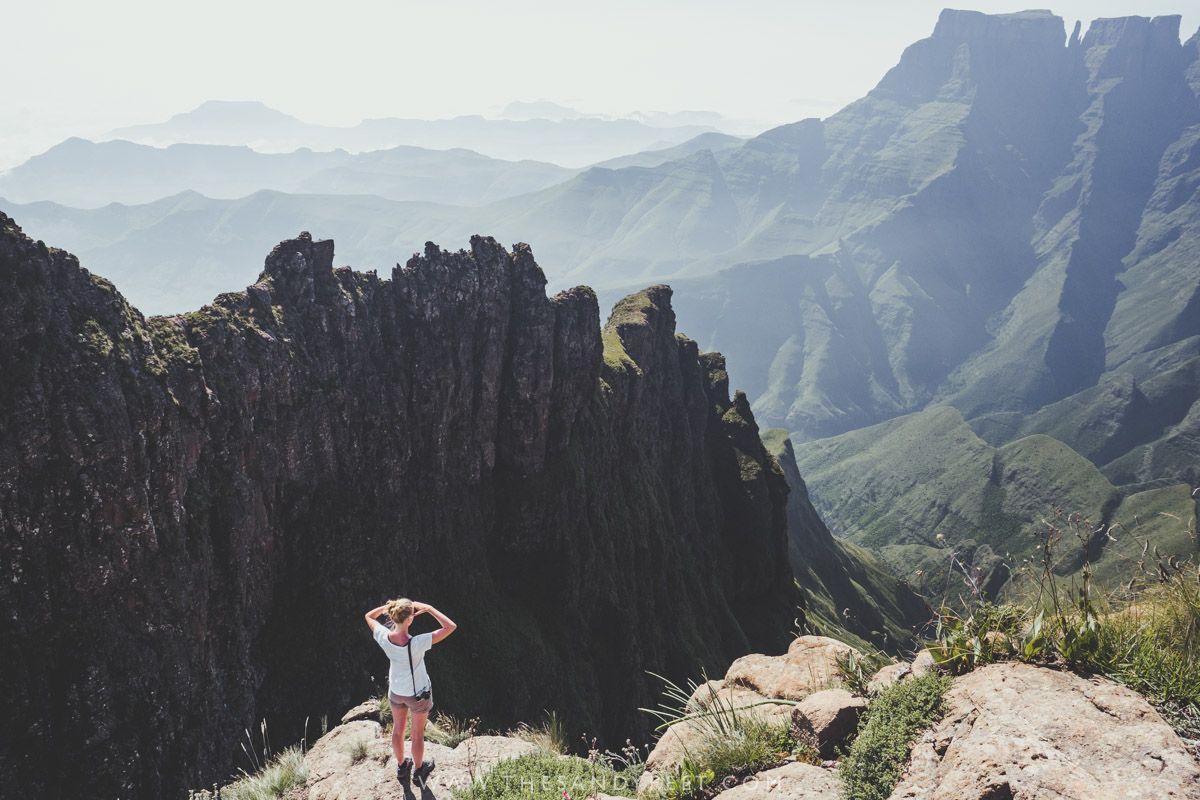
The Drakensberg Amphitheatre is one of the most dramatic natural landmarks in South Africa, stretching across kilometers of sheer rock face. Rising high above the valley floor, the cliffs create monumental backdrops for wide landscape photography. Tugela Falls, which plunges from the top of the escarpment, becomes a centerpiece after summer rains, making long exposure photography particularly rewarding.
Wide lenses capture the scale of mountain and valley together, while stitched panoramas highlight the immensity of the escarpment. Foreground elements such as winding rivers and flowering meadows add depth to compositions. Cloud banks often cling to the cliffs, providing moody atmospheres that shift rapidly, rewarding patience and repeated attempts. Trails within the park offer access to elevated vantage points with unique perspectives of both cliffs and waterfalls. The ever changing weather, from golden light to dramatic storms, ensures no two visits produce the same images, making this a must visit for serious landscape photographers.
1. Kruger National Park and Greater Kruger Region

Kruger National Park is the ultimate destination for wildlife photography in South Africa, offering sweeping savanna landscapes and abundant opportunities to capture the Big Five. Sunrise and sunset game drives bathe the plains in golden light that enhances fur textures and silhouettes. Telephoto lenses are essential for isolating lions, elephants, leopards and rhinos, while wide angle lenses provide dramatic images of wildlife against vast horizons. Waterholes and riverbanks concentrate animal activity, allowing patient photographers to document herds and predators in action.
Knowledge of animal behavior often proves more valuable than chasing sightings, as it helps anticipate key moments such as a predator stalking or an elephant bathing. Long exposure silhouettes at dusk add artistic mood to classic wildlife portraits. Camps across the park also offer guided photography safaris tailored to both beginners and advanced enthusiasts. With its mixture of dramatic landscapes and unforgettable wildlife encounters, Kruger remains South Africa’s number one photography destination.

